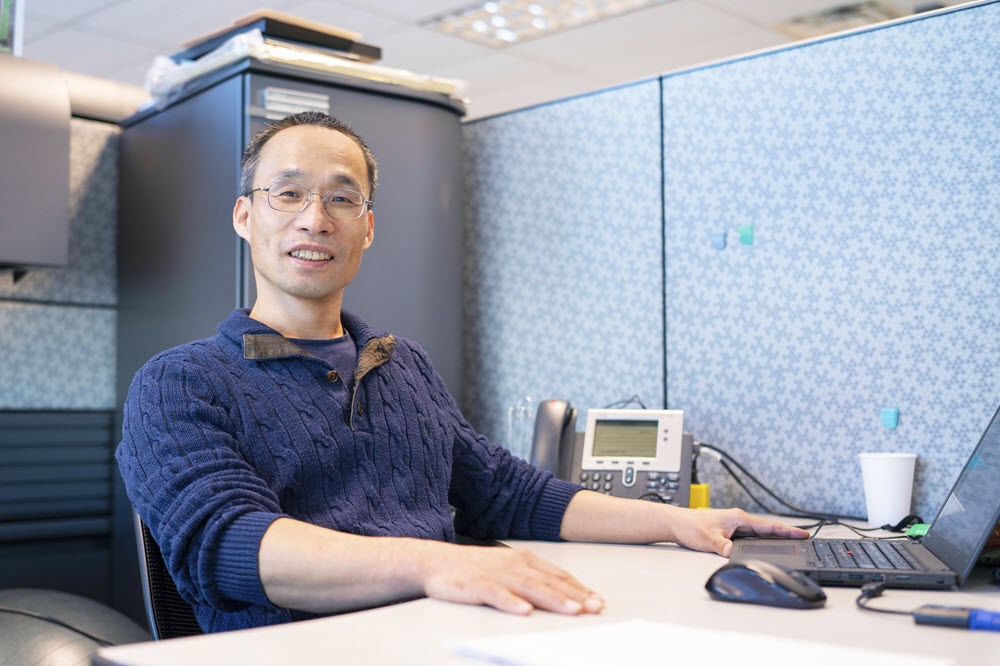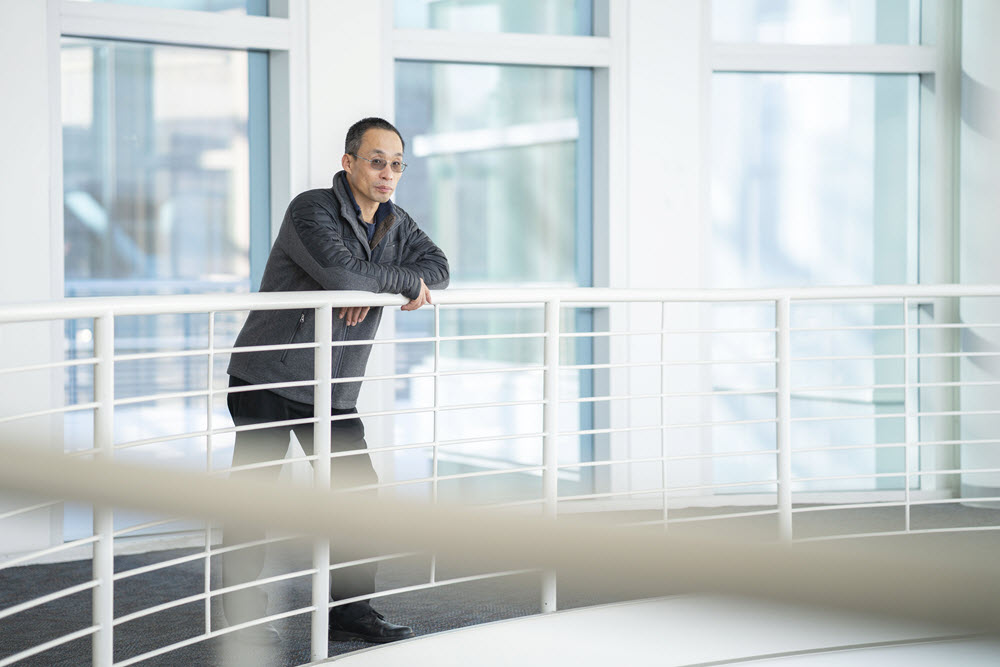Latest News
Kangguo Cheng: Invention As Team Sport
By James Daly The cliché often associated with breakthrough inventions imagines the moment of creative insight coming in a flash. As when Newton’s falling apple supposedly inspired his theory...
By James Daly
The cliché often associated with breakthrough inventions imagines the moment of creative insight coming in a flash. As when Newton’s falling apple supposedly inspired his theory of gravity, a random act suddenly unknots a daunting problem.
Dr. Kangguo Cheng knows better than to trust such charming tales. “You cannot create complex things by yourself—it takes a team,” says Cheng, a lead engineer at IBM Research and one of the most prolific inventors in the world.
Cheng, an IBM Master Inventor, is listed on nearly 2,000 U.S. patents—more than Thomas Edison—and more than 2,400 worldwide patents. For the year 2019 he was IBM’s leading patent recipient, with 337 to his credit. Many of his patents list four or more co-authors, attesting to his embrace of a team sports approach to scientific research.
 ROBERT JONES FOR IBMKangguo Cheng, an IBM Master Inventor.
ROBERT JONES FOR IBMKangguo Cheng, an IBM Master Inventor.
Cheng, 47, joined IBM after finishing his PhD in materials science and engineering at the University of Illinois at Urbana-Champaign. That was in 2001, less than 20 years ago, making his pace of cooperative invention all the more remarkable.
Creating More Efficient Semiconductors
Much of the work Cheng and his hundreds of fellow researchers focus on from their lab in Albany, N.Y., involves creating more efficient semiconductors—the chemical elements or compounds that control and conduct electrical current, and that make blazingly fast microprocessors possible. He has worked on a variety of advanced semiconductor technologies including memory, embedded memory, high-performance logic and low-power techniques.
As a result, the patents Cheng and his teammates procure often cover highly esoteric topics. Examples include building “a nanosheet transistor with robust source/drain isolation from substrate” or creating “self-limiting liners for increasing contact trench volume.”
Though the phrasing might glaze the eyes of non-scientists, the technology has already enabled huge performance leaps in several key IBM systems, like the new Z15 microprocessor in IBM Z mainframes.
When One Plus One Equals Three
The key to innovation, Cheng says, is to approach a problem from several angles—what he calls “path lines.” Research teams hike down various investigatory trails, each step deliberate and meticulously documented.
Team members come from a variety of disciplines, assuring fresh symbiotic thinking. “Two people with different skills and areas of expertise will look at a problem in a completely different way,” Cheng says. “Brainstorming with people with a variety of backgrounds provides different angles for looking at a challenge. You may need many approaches to solve a single problem. When it comes to invention, one plus one always equals three.”
Cheng recalls a particularly fruitful collaboration with Ali Khakifirooz. “He was an expert in device physics, while my expertise is material science and process integration,” Cheng says. Those complementary skills, when teamed with the work of others, resulted in “several hundred inventions.”
Generating a Pipeline of Ideas
In the early stages of research, this combination of skills and viewpoints can be a recipe for freewheeling ideas and diverse approaches. “You want to be crazy, but lucid,” Cheng says with a laugh. For a man involved in serious research on the frontiers of scientific knowledge, Cheng has an irreverent side. His LinkedIn profile displays a playful caricature in place of a photo, and he has been known to list his job title as cook or plumber in internal IBM directories. “My work is like cooking things in the kitchen, using ingredients that others have provided,” he explains. “I also love to fix things that aren’t working that well.”
Some teams may take up to six or seven years in this critical trial-and-error phase. Days and months are filled with brainstorming, rough sketches, performance tests and detailed notes, a process Cheng calls “generating a constant pipeline of ideas.” It’s all done with the knowledge that many research paths become dead ends. As much as 70 percent of an inventor’s work, he says, never makes it into products.
“But if you focus on what’s good and what’s right, you can make real progress,’’ Cheng says. “The beginning may simply involve incremental improvements. By reaching those goals and solving smaller problems, we get to bigger goals.”
Nurturing Young Talent
All these years of research have also allowed for the nurturing of newbies. Cheng emphasizes the importance of mentorship, making a point to help younger researchers explore new ideas and bring their energy and ideas to projects. His chief advice: “be open-minded and optimistic.”
 ROBERT JONES FOR IBM
ROBERT JONES FOR IBM
Cheng gives high praise to the many talented IBM scientists and engineers who mentored him, back when “I knew nothing about invention.” Rama Divakaruni and Carl Radens, for instance, taught him about taking an idea and turning it into a product, while remaining hopeful in the face of intractable problems. Jack Mandelman and Louis Hsu were also important mentors.
“I learned not only how to come up with an inventive idea, but how to articulate those ideas to invention review boards as well as how to communicate with patent attorneys in order to draft patent applications,” he says.
Seeing Problems as Opportunities
Cheng grew up in China, where he obtained his bachelor’s and master’s degrees before moving to the U.S. to earn his PhD. Today, after long hours in the lab, he relaxes by playing chess with his son Michael, 15, whom he admits “is much better than I.”
A man who is constantly pondering the future, Cheng believes the next great research leaps will happen in building innovative accelerator architectures for AI and deep learning. Much of today’s computation remains tied to hardware built for spreadsheets and databases, Cheng notes, but when conventional computing is used for AI, it is power-hungry and inefficient. AI-optimized chipset architectures will play an important and highly specific role as IBM pushes the physics of AI to deliver radical improvements over the next decade.
“There is no overnight success in research and invention,” he says. “Your basic tools involve physics, chemistry and math, but it always comes down to curiosity. You must be able to see problems as opportunities.”